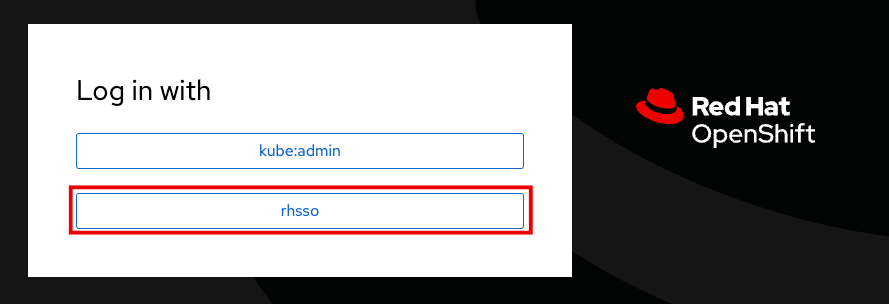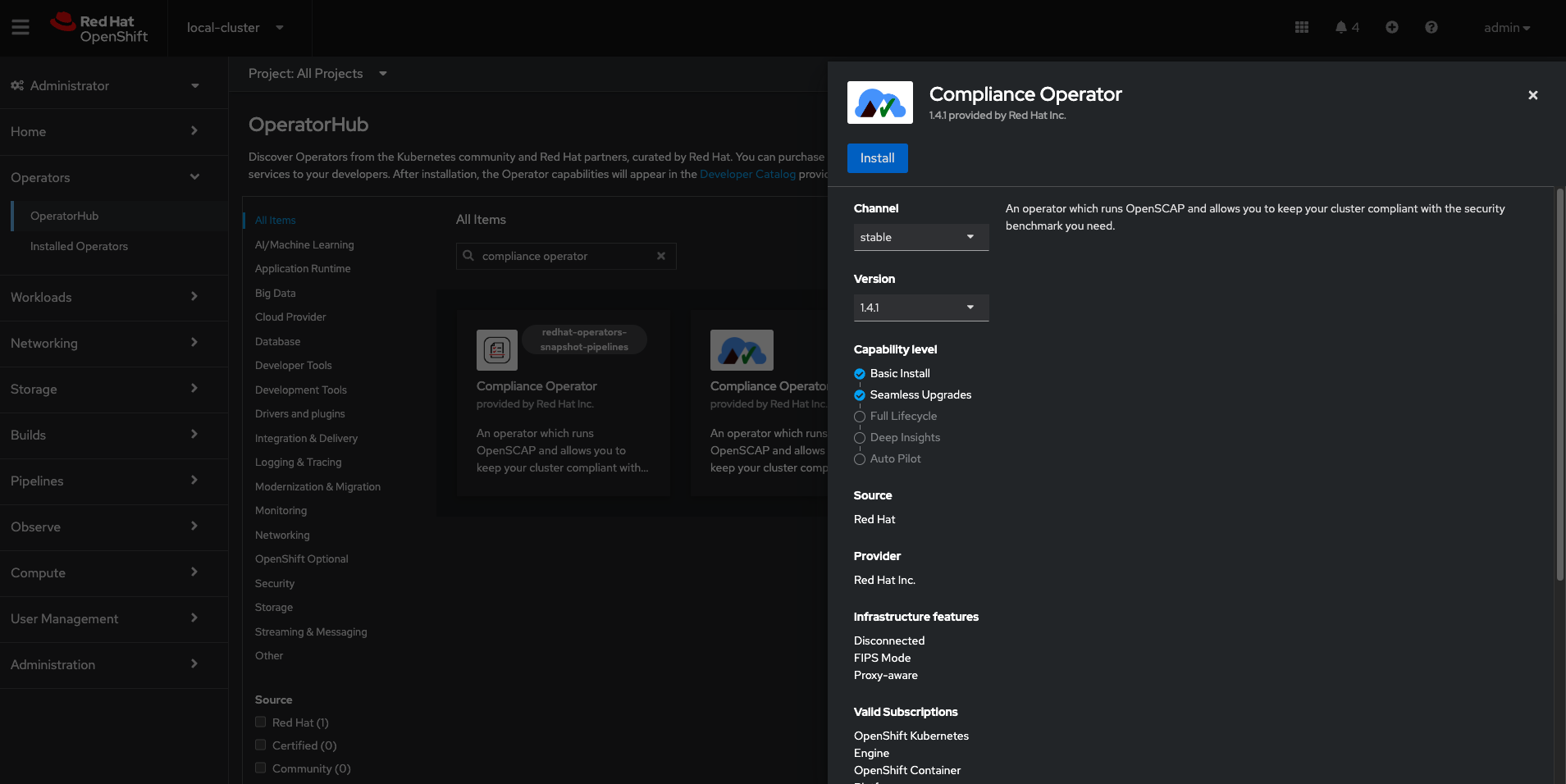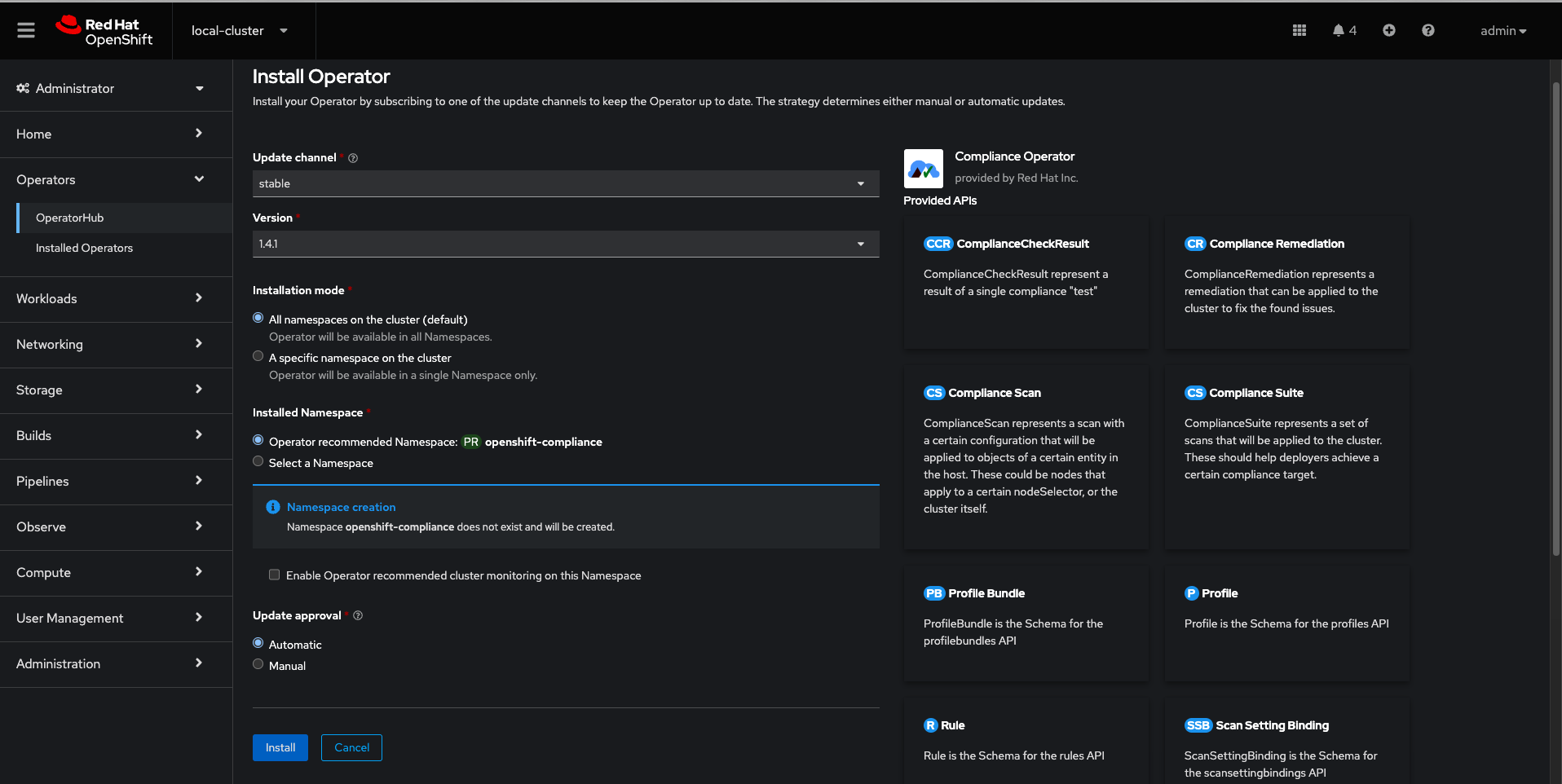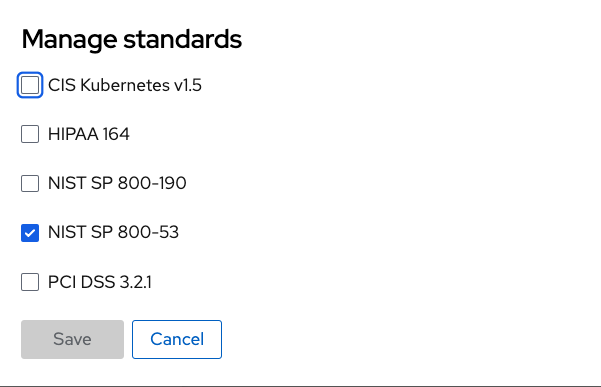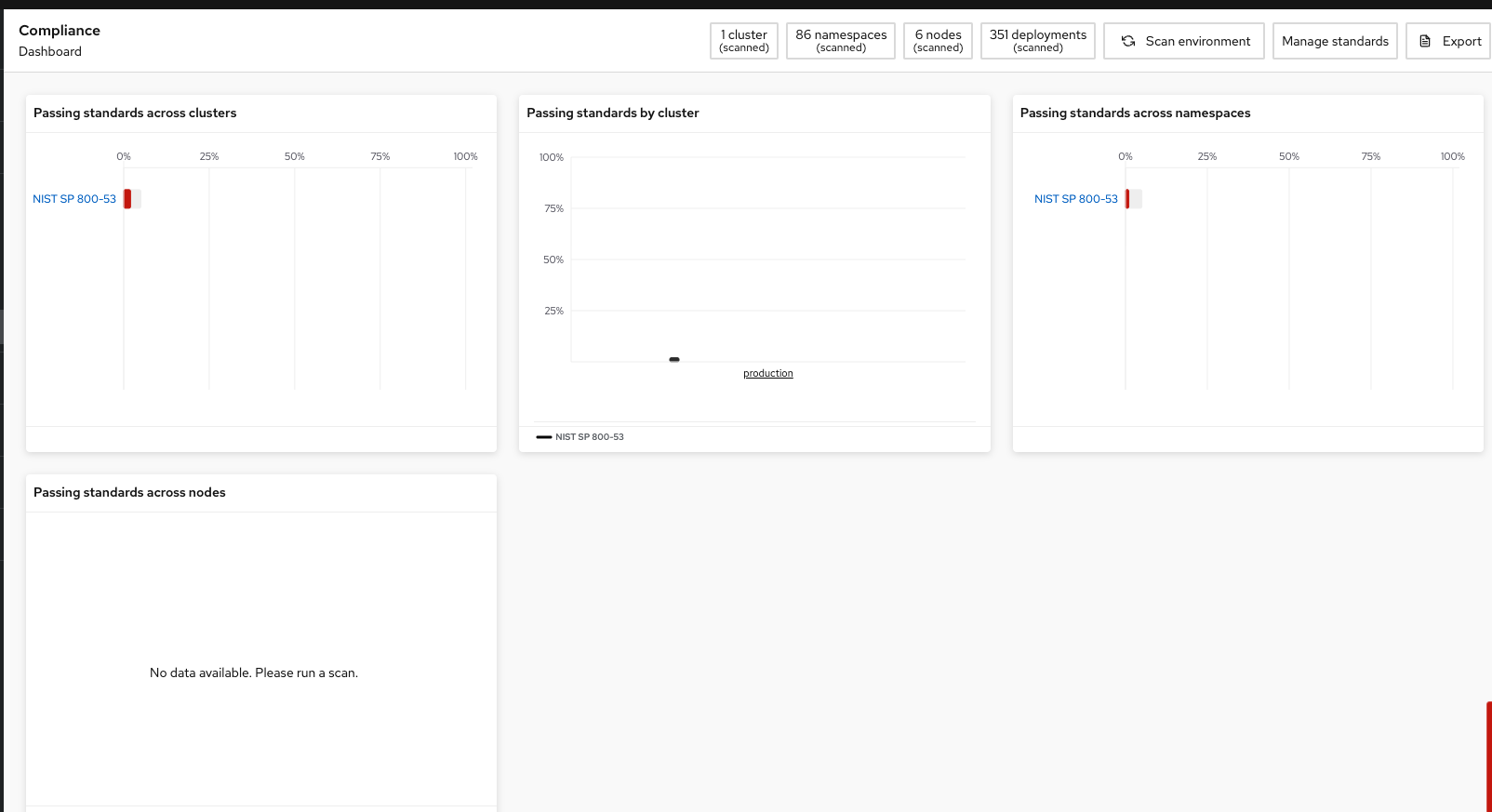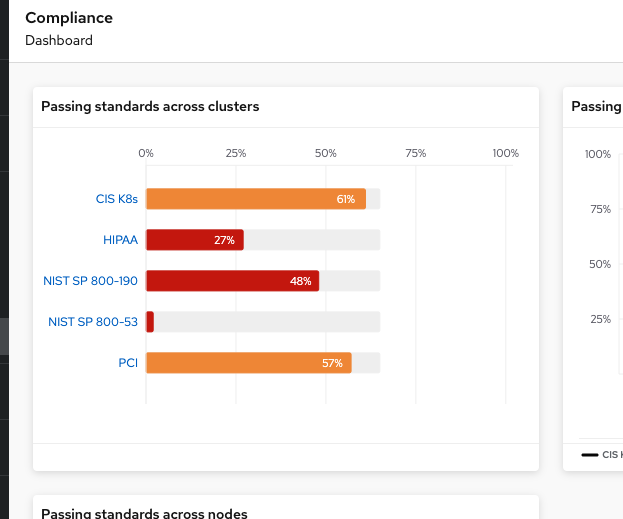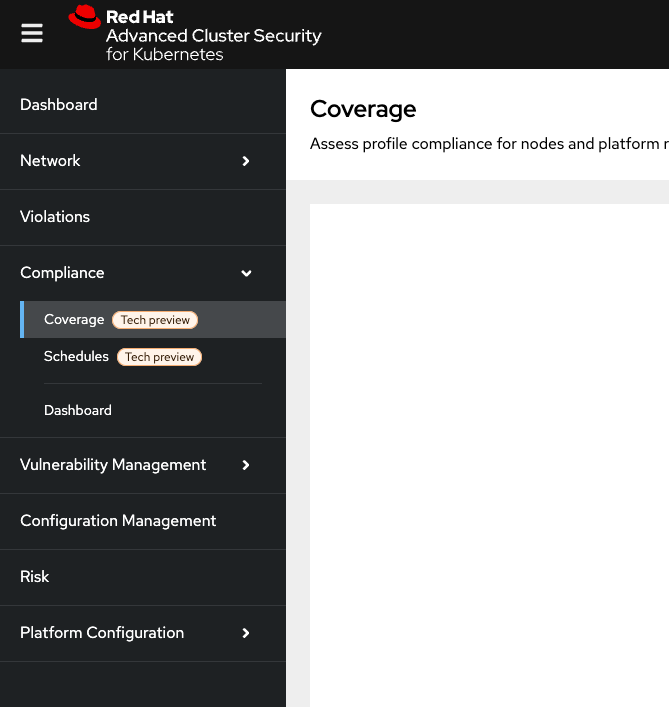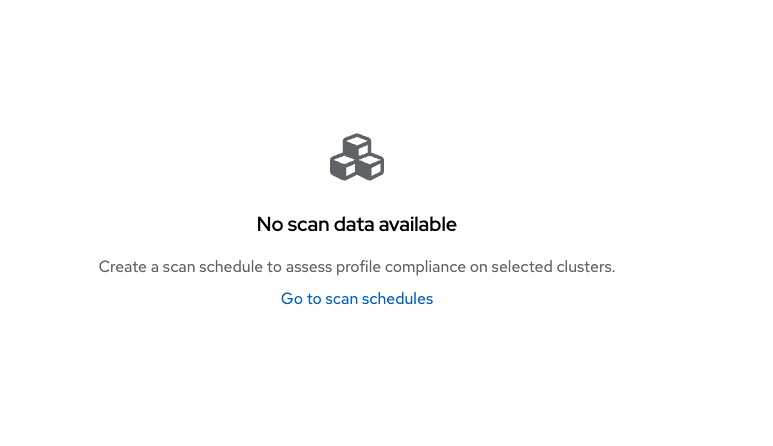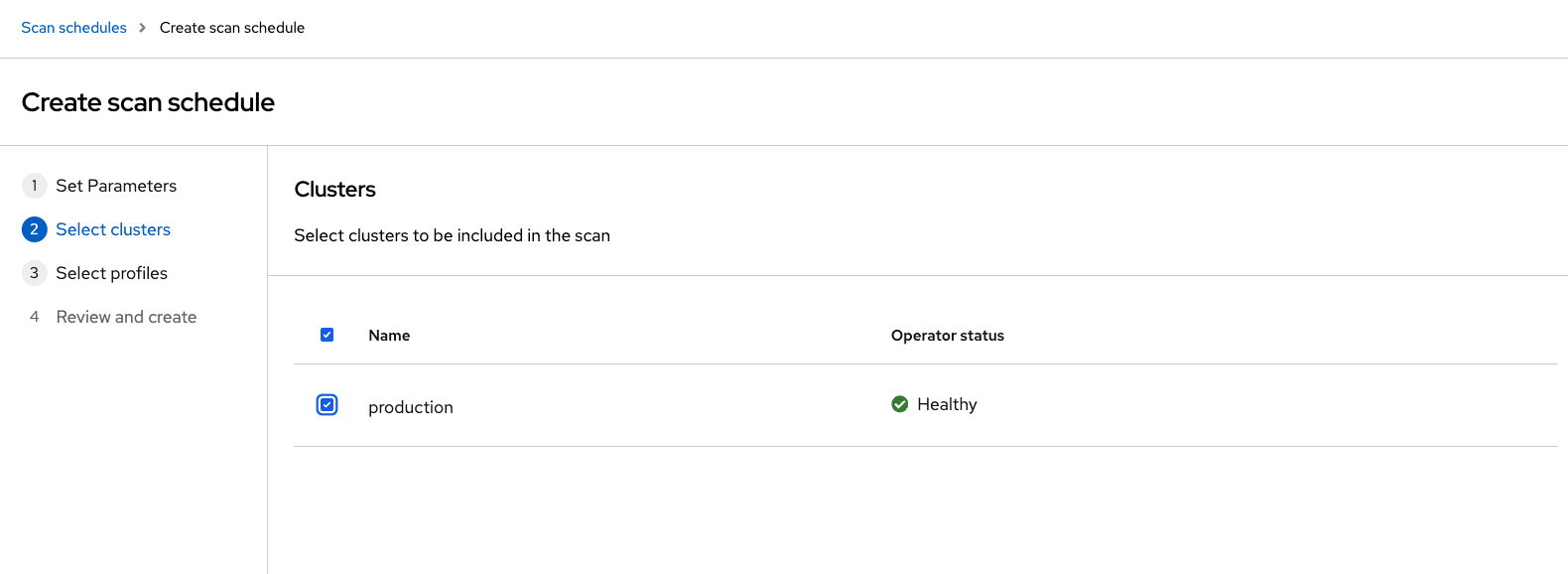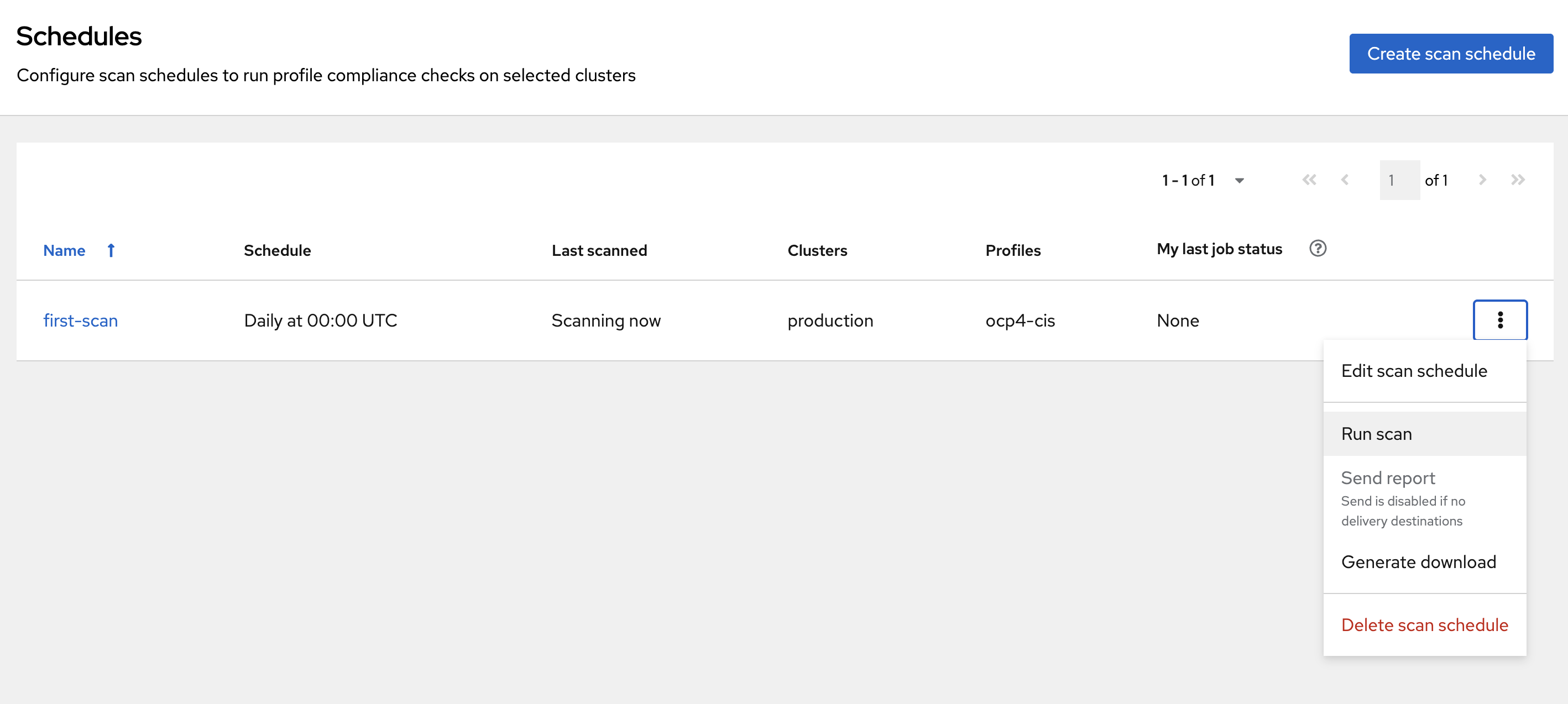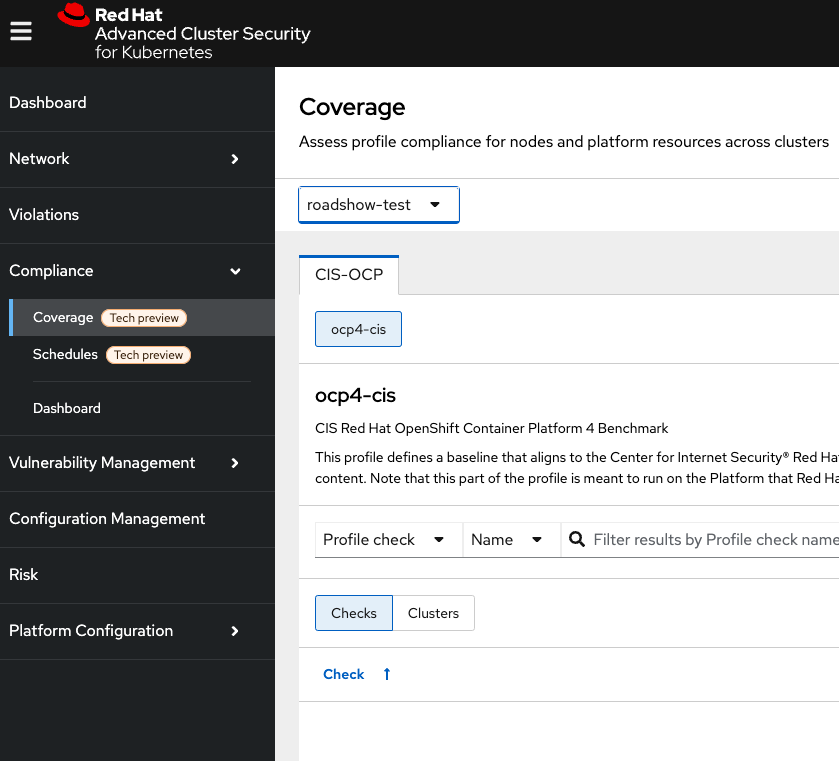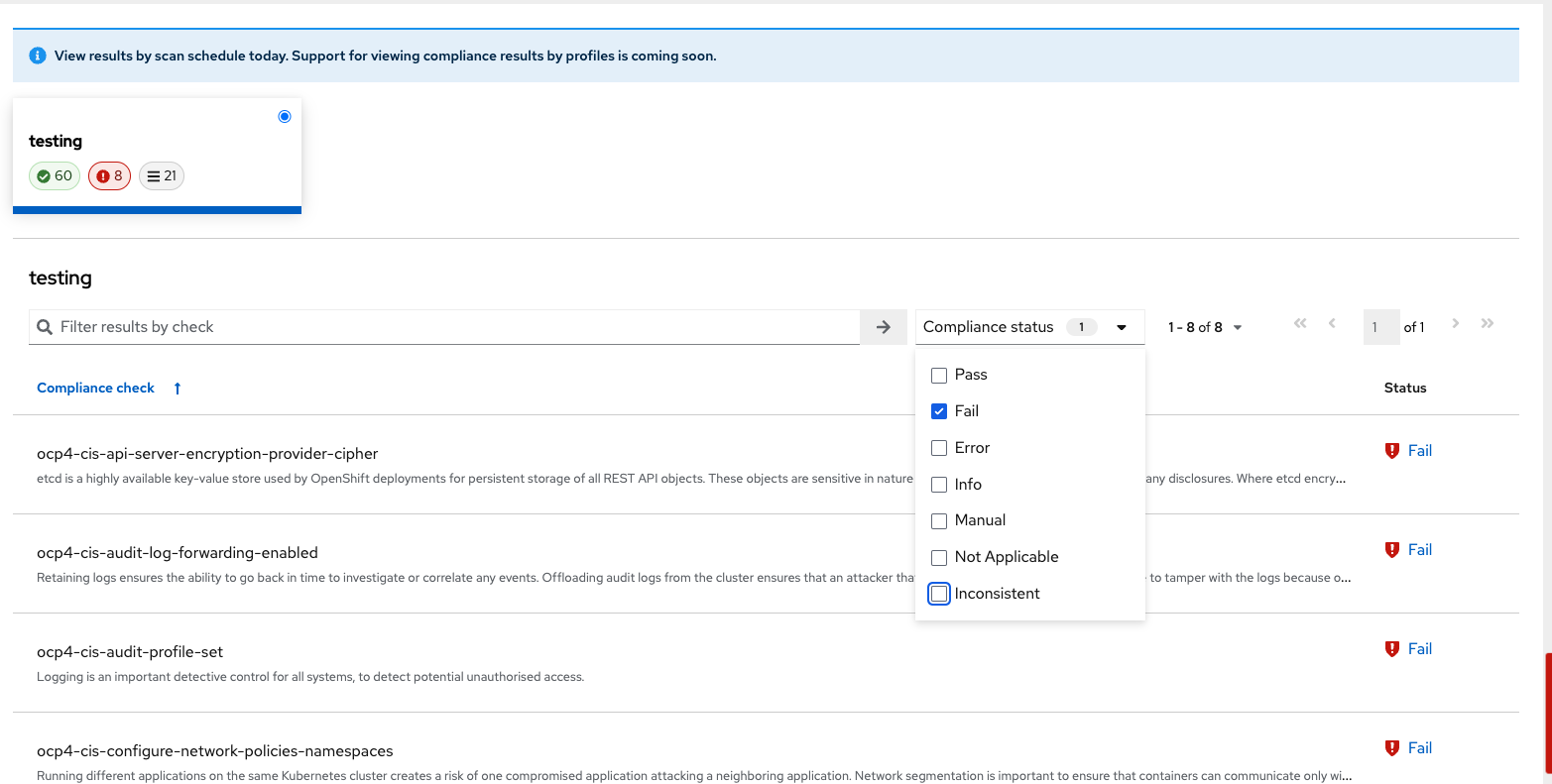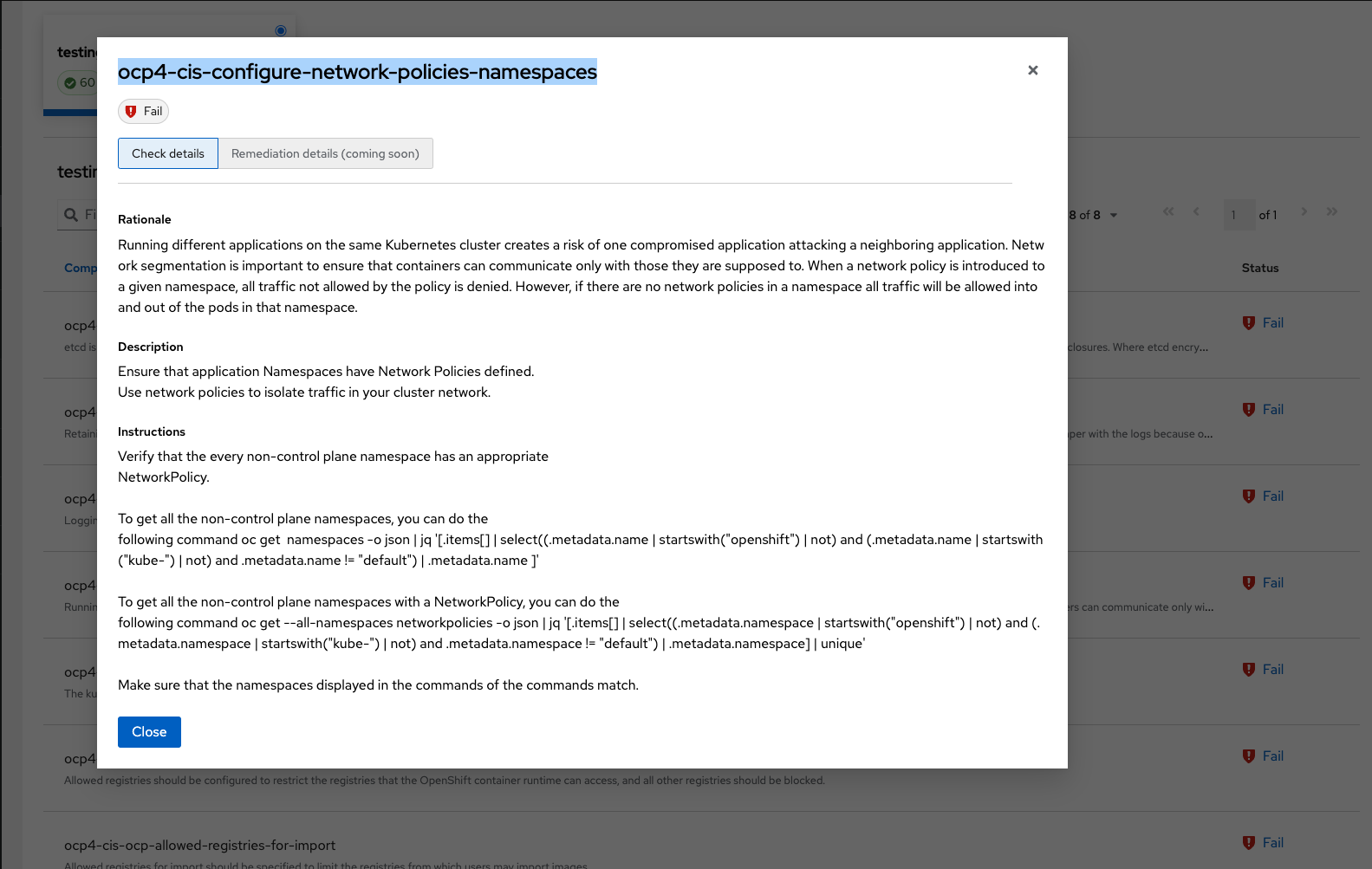Compliance
Module Goals
-
Set up the Compliance Operator
-
Understand the Compliance dashboard
-
Schedule a scan in the Compliance Coverage dashboard
Compliance Operator and Compliance in ACS
The OpenShift Compliance Operator allows OpenShift Container Platform administrators to define the desired compliance state of a cluster and provides an overview of gaps and ways to remediate any non-compliant policy.
The OpenShift Compliance Operator assesses both Kubernetes API resources and OpenShift Container Platform resources, as well as the nodes running the cluster. The Compliance Operator uses OpenSCAP, a NIST-certified tool, to scan and enforce security policies provided by the content.
Red Hat Advanced Cluster Security for Kubernetes (RHACS) supports OpenShift Container Platform configuration compliance standards through an integration with the OpenShift Container Platform Compliance Operator. In addition, it allows you to measure and report on configuration security best practices for OpenShift Container Platform.
Install the Compliance Operator
Procedure
. Log into the OCP console at https://console-openshift-console.apps.cluster-sample.sample.sandboxsample.opentlc.com:
. Click the rhsso option
. Enter the OCP credentials:
User: |
sample_user |
Password: |
sample_KQt21WpVVWzo |
-
In the web console, go to the Operators → OperatorHub page:
-
Enter compliance operator into the Filter by keyword box to find the Compliance Operator:
-
Select the Compliance Operator to view the details page:
-
Read the information about the Operator, select the defaults, and then click Install:
Since RHACS was installed prior to the Compliance Operator, we’ll need to restart the ACS sensor in the OpenShift cluster to see these results.
-
Run the following command to restart the RHACS scanner pod. This will speed up the process for the profiles to appear in RHACS Central:
oc delete pods -l app.kubernetes.io/component=sensor -n stackroxWith the Sensor restarted, kick off a compliance scan in ACS to see the updated results.
Execute Your First Compliance Scan
When installing RHACS you need to kick off a compliance scan to ensure that the Compliance results are available. So let’s execute our first compliance scan.
Procedure
-
Head to the Compliance → Dashboard:
-
Click the "Scan environment" button on the top left:
Wait a few seconds and your dashboard should populate.
Review the Compliance Reports in the Compliance Dashboard
The compliance reports gather information for configuration, industry standards, and best practices for container-based workloads running in Kubernetes and OpenShift.
Each standard represents a series of controls, with guidance provided by RHACS on the specific OpenShift configuration or DevOps process required to meet that control.
Let’s review the dashboard.
In the top right of the dashboard, you will see two of the dropdown options:
-
Manage standards &
-
Export
Click the "Manage standards button":
You will see all of the standards available to you in the dashboard. These standards will affect ALL of the controls that you see in the dashboard. For example:
Remove all of the options except NIST SP 800-53:
And you should end up with a dashboard that looks like this:
Focusing on the standards that matter most to you is essential for reducing unnecessary noise in the UI.
| Add all the standards back before progressing to the next section. |
Click the "Manage standards button":
-
Click on PCI, or the PCI percentage bar, in the upper-left “Passing Standards Across Clusters” graph
-
Click on Control 1.1.4, “Requirements for a firewall…”
For example, PCI-DSS has controls that refer to firewalls and DMZ - not exactly cloud-native.
In OpenShift, that requirement, and other isolation requirements, is met by Network Policies, and the 6% compliance score here indicates that very few deployments have correctly defined policies.
Evidence Export
Last thing about compliance - you’re only as compliant as you can prove!
-
Click on the Export button in the upper right to show the “Download evidence as CSV” option
This is the evidence export that your auditors will want to see for proof that the security controls mandated are actually in place.
How would you bring this standard up to 100%?
Managing the Compliance Coverage Feature (Technology Preview)
You can view the compliance results associated with your cluster by using the Compliance Coverage feature in the Red Hat Advanced Cluster Security for Kubernetes (RHACS) portal. The feature collects compliance information gathered by the Compliance Operator into a single interface.
Currently, the Compliance Coverage feature and the Compliance Operator evaluate only infrastructure and platform compliance.
Viewing the Cluster Compliance Page
By viewing the cluster compliance page, you can get a comprehensive overview of the compliance status of your clusters.
-
In the RHACS portal, go to the Compliance → Coverage tab:
The cluster compliance page organizes information in the following groups:
1. Cluster: Gives the details of your cluster and provides a snapshot of its current state and configurations.
2. Operator status: Assesses the health and operational status of the Compliance Operator instance within your cluster and ensures that the Operator is running optimally and functioning seamlessly.
3. Compliance: Shows the percentage of checks that have been passed for the scanned profiles.
There is currently nothing in the coverage dashboard since no schedule has been created yet!
Creating a Compliance Scan Schedule
By creating a compliance scan schedule, you can customize and automate your compliance scans to align with your operational requirements.
-
In the RHACS portal, go to the Compliance → Schedules tab:
-
Click Create scan schedule:
In the Configuration options page, provide the following information:
Name: |
first-scan |
Description: |
Specify the reason for each compliance scan. |
Configure schedule: |
Adjust the scan schedule to fit your required schedule: |
Frequency: |
From the drop-down list, select how often you want to perform the scan. Frequencies include Daily, Weekly, and Monthly. |
On day(s): |
From the list, select one or more days of the week on which you want to perform the scan. Valid values include Monday, Tuesday, Wednesday, Thursday, Friday, Saturday, Sunday, The first of the month, and The middle of the month. These values are only applicable if you specify the frequency of scan as Weekly or Monthly. |
Time: |
Start to type the time in hh:mm at which you want to run the scan. From the list that is displayed, select a time. |
-
Click Next:
-
In the Clusters page, select one or more clusters that you want to include in the scan:
-
Click Next:
-
In the Profiles page, select the ocp4-cis profile. This is the most up-to-date CIS benchmarks for OpenShift Container Platform 4:
-
Click Next:
-
Review your scan configuration, and then click Create:
-
Click the ellipses on the side and select "Run scan":
Viewing the Compliance Scan Status
By viewing the status of a compliance scan, you can efficiently monitor and analyze the health of your clusters. Let’s take a look!
Procedure
-
In the RHACS portal, go to the Compliance → Coverage tab:
-
Select the compliance scan you have created:
Compliance Scan Status Overview
The scans will have varying results. Review the options that will show up in RHACS.
OPTIONAL: From the Compliance status dropdown list, select one or more statuses by using which you want to filter the scan details. Compliance statuses include Pass, Fail, Error, Info, Manual, Not Applicable, and Inconsistent.
Status |
Description |
Fail |
The compliance check failed. |
Pass |
The compliance check passed. |
Not Applicable |
Skipped the compliance check because it was not applicable. |
Info |
The compliance check gathered data, but RHACS could not make a pass or fail determination. |
Error |
The compliance check failed due to a technical issue. |
Manual |
Manual intervention is required to ensure compliance. |
Inconsistent |
The compliance scan data is inconsistent, and requires closer inspection and targeted resolution. |
The scan shows 62 passing controls, 8 failing controls, and 21 manual controls.
Let’s dive a little deeper.
Procedure
-
Sort the scan by the Fail status only:
-
Review the failing standard called 'ocp4-cis-configure-network-policies-namespaces':
You’ll notice in details it gives you a Rationale, Description, and Instructions on how to ensure a passing grade in the future. Let’s try running those commands.
-
Run the following command to get all the non-control plane namespaces:
oc get namespaces -o json | jq '[.items[] | select((.metadata.name | startswith("openshift") | not) and (.metadata.name | startswith("kube-") | not) and .metadata.name != "default") | .metadata.name ]'Sample Output
[lab-user@bastion pipeline]$ oc get namespaces -o json | jq '[.items[] | select((.metadata.name | startswith("openshift") | not) and (.metadata.name | startswith("kube-") | not) and .metadata.name != "default") | .metadata.name ]'
[
"backend",
...
"vault"
]-
Next, compare this list to the previous one. To get all the non-control plane namespaces with a NetworkPolicy, run the following command:
oc get networkpolicies -A -o json | jq '[.items[] | select((.metadata.namespace | startswith("openshift") | not) and (.metadata.namespace | startswith("kube-") | not) and .metadata.namespace != "default") | .metadata.namespace] | unique'Sample Output
[lab-user@bastion pipeline]$ oc get --all-namespaces networkpolicies -o json | jq '[.items[] | select((.metadata.namespace | startswith("openshift") | not) and (.metadata.namespace | startswith("kube-") | not) and .metadata.namespace != "default") | .metadata.namespace] | unique'
[
"janus-argocd",
"medical",
"sonataflow-infra",
"stackrox",
"trusted-profile-analyzer",
"vault"
]It’s great to know that StackRox (RHACS) is covered!
In the Networking section, we will go about fixing this issue through the generation and application of network policy. For now, I offer you a challenge.
A Task to Complete on Your Own
Here is your mission:
Should you choose to accept it:
Implement a daily scan with the rhcos4-stig profile.
And for those wondering, review this link discussing what is DISA STIG?
Your mission is completed with a successful run of a DISA STIG compliance run altering the compliance status of the production cluster.
